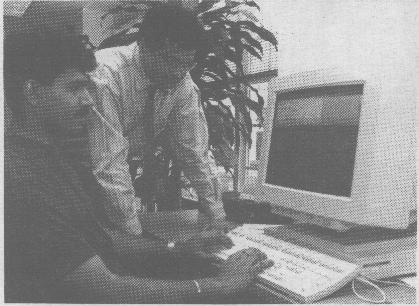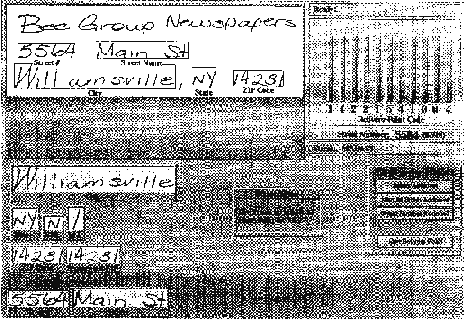



By PAULA J. FREEDMAN
Through rain and snow and dark of night, optical scanners will help direct your handwritten mail to the proper address, 75 percent of the time.
So says Dr. Sargur N. Srihari of Amherst, director of the Center of Excellence for Document Analysis and Recognition (C.E.D.A.R), a computer science research group based at the State University of Buffalo.
If your handwriting makes the postman want to sing "return to sender, address unknown,' imagine what it does to a computer -- as if it's not hard enough for a human postal sorter to decipher your scrawl, C.E.D.A.R is developing digital equipment to do the jog. Srihari expects the system to be fully operational by September of this year.
C.E.D.A.R's goal is to build a computer system that can get the same information from a piece of paper that a human being would.
'It has to do with scanning paper and interpreting what's on the paper," Srihari said.
Since 1991, the C.E.D.A.R research group has worked under a grant from the United States Post Office to develop hardware and software capable of reading pertinent information off the face of an envelope, and routing millions of pieces of hand addresses mail to the proper geographical region, anywhere in the United States. It does this at a rate of about 13 envelopes per second -- faster by far than the fastest human sorter.
In the USPS project, a computer scans the face of an envelope to find the address, and then uses that information to generate a bar code, or "delivery point code" that represents the postal zip code and other information.
C.E.D.A.R.'s postal database contains a record for every legitimate mailing address in the U.S.
"There are 120 million p;aces where mail can be delivered to in the United States," Srihari said.
"We're able to read addresses and get zip codes 75 percent of the time."
About 25 percent of the envelopes are rejected as unreadable, and must be sorted by hand.
"A human cannot still be eliminated from the process," Srihari said.
Srihari's group has devoted much of the last decade to handwriting recognition, a subdivision of artificial intelligence, itself a sub-specialty of computer science.
The research involves "many other fields of computer science," Sarihari said. Other specialties tapped include pattern recognition, computer architecture, a parallel processing and databases.
Srihari's wife, Dr. Rohini Srihari, is also a C.E.D.A.R research scientist, specializing in language processing.
Post office machinery has been "reading machine printed text for quite a while," according to Keith Bettinger, C.E.D.A.R software engineer. The challenge comes from trying to read the handwritten text.
"One of the key areas of research (is) recognizing handwritten words," said Research Scientist Ajay Shekhawat, who is also a graduate student in the UB Department of Computer Science.
"In an address, everything restricts everything else," explained Shekhawat.
Take, for example, the Bee's street address: 5564 Main St. The house number 5564 only occurs a few times within the 14221 zip code, which narrows the number of street names the computer must try. This reduces errors when the computer attempts to match the handwritten address with known addresses in the same zip code.
"By trying all possibilities, you can get all possible correlations," Shekhawat said.
The computer matches the street address with the zip code, and churns out the four digit zip code extension to more efficiently route the mail. The database query takes only about one millisecond to come up with all possible answers, Shekhawat added.
The "ZIP+4" database is stored in 200 megabytes of memory, the "average size hard drive in a PC at home nowadays," according to Bettinger.
Although C.E.D.A.R is thought of by some as "the post office group," according to Srihari, "the post office is only one of a half a dozen sponsors of research here."
Others include Department of Defense, the National Science Foundation, the Internal Revenue Service, Kodak and Xerox.
Each of those sponsors is looking for "practical uses" for C.E.D.A.R.'s research, "somewhere down the line," he said.
In fact, a computer system developed by C.E.D.A.R. is already in use at the Cincinnati IRS office. Taxpayers who filed 1040EZ forms there this year will ' have their names and addresses read electronically via a similar system.
The group is working on "some new projects for the postal service," Srihari said. Among them is an experiment to electronically read business reply cards -- such as magazine subscription orders -- information which can then be made available electronically to companies.
 In the graphical representation above, the scanned image of a
In the graphical representation above, the scanned image of a
hand-addressed envelope is read by a computer, which generates a bar
code representing the addressee's "AIP+4"code.